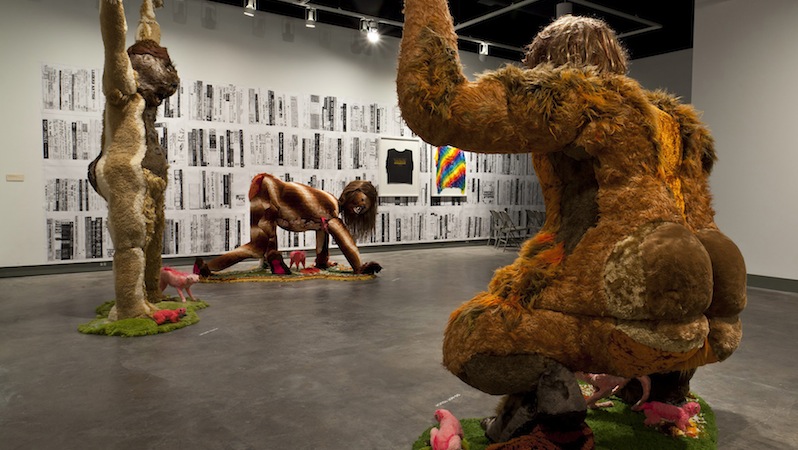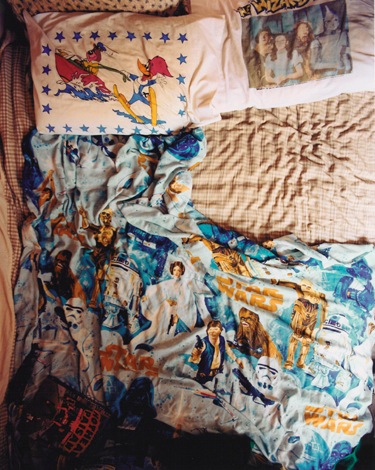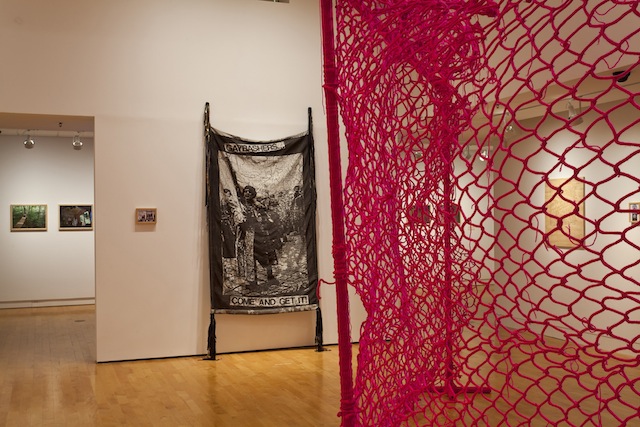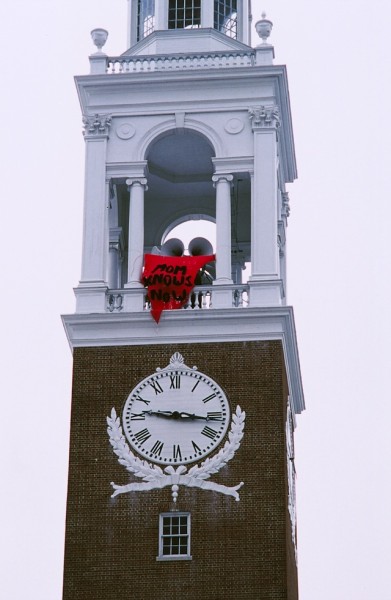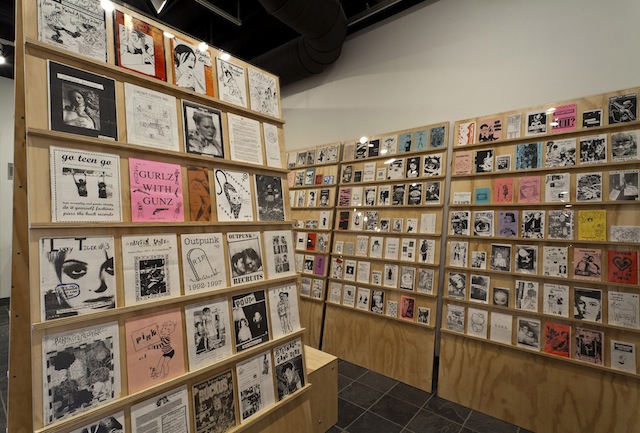Even with icons like Lydia Lunch, Crass’ Eve Libertine and Chumbawamba’s Alice Nutter (among many others), the rebellious genre of punk rock was due for its own feminist revolt by the late 1980s. The machismo of Glenn Danzig, Henry Rollins and GG Allin still defined much of the punk scene, but the misty Pacific Northwest offered an antidote in the form of the burgeoning riot grrrl movement. Olympia-based Bikini Kill has become the most well known band from this era, but their predecessors date from the early days of punk and their contemporaries stretched across the globe.
The influence of riot grrrl is far reaching throughout both subcultures and popular society. Feminist and queer politics, DIY, zine making, and other forms of democratic and radical expression were at the core of riot grrrl and offered an outlet or a new way of thinking for many who came of age in the 1990s and later. Alien She, on view at the Yerba Buena Center for the Arts, explores the relationship between riot grrrl and seven active visual artists: Tammy Rae Carland, Miranda July, Faythe Levine, Allyson Mitchell, L.J. Roberts, Stephanie Syjuco, and Ginger Brooks Takashi.
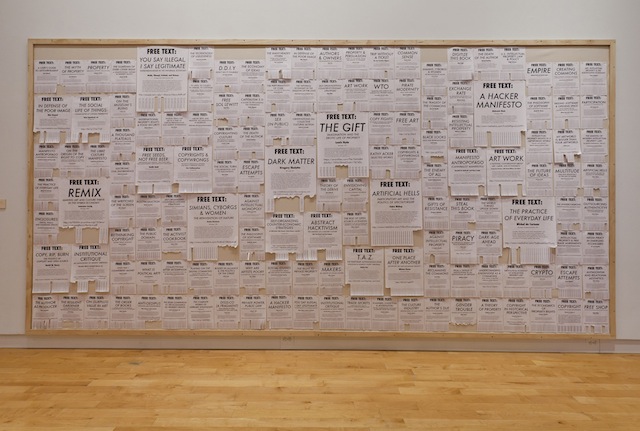
Bay Area artist Stephanie Syjuco’s piece FREE TEXTS (2011-12, updated 2013) is a wall of hundreds of black and white flyers with pull off tabs. Rather than peddling baby or dog sitting services, as such flyers commonly do, the tabs provide links to unauthorized PDF downloads of texts from authors such as Andrea Fraser, Noam Chomsky, and the San Francisco Diggers. The iteration on view in Alien She includes texts from authors that are important to the practices of the other artists in the exhibit.
Though clearly referencing informal neighborhood economies, the work shares a visual style with musicians-wanted ads and the simplest of show flyers. Importantly, the work itself participates in free culture and literary piracy. With the exception of those providing works that may not have copyright protection, such as Guy Debord’s “Theory of the Dérive,” each of these flyers represents a criminal act, though they are in the service of radical politics. And like all works that seem to beckon viewers to touch them without explicitly condoning it, FREE TEXTS flaunts its mischievousness when viewers self-consciously debate whether they’re allowed to engage with the work and take a tab. Through the piece, Syjuco toys with the entire concept of a punk rock museum exhibit.
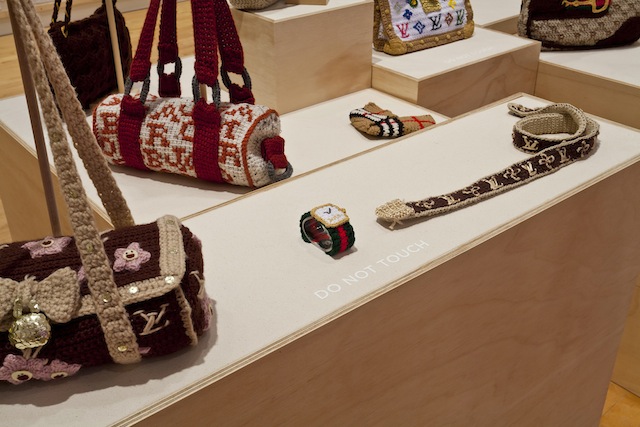
And yet, Syjuco’s The Counterfeit Crochet Project (Critique of a Political Economy) (2006-ongoing) is accompanied by a sign warning viewers to keep their hands to themselves, as is museum tradition. The piece is comprised of several crocheted knockoffs of designer handbags, scarves, and accessories that Syjuco commissioned from various crafters. Though the objects are clearly forgeries, the ability to mimic the qualities that give these items monetary value in the marketplace is made clear. The absurdity of a $1,000 Burberry scarf is hard to ignore when confronted with the open secret that the color scheme and designs that give them so much social capital can be easily replicated.
